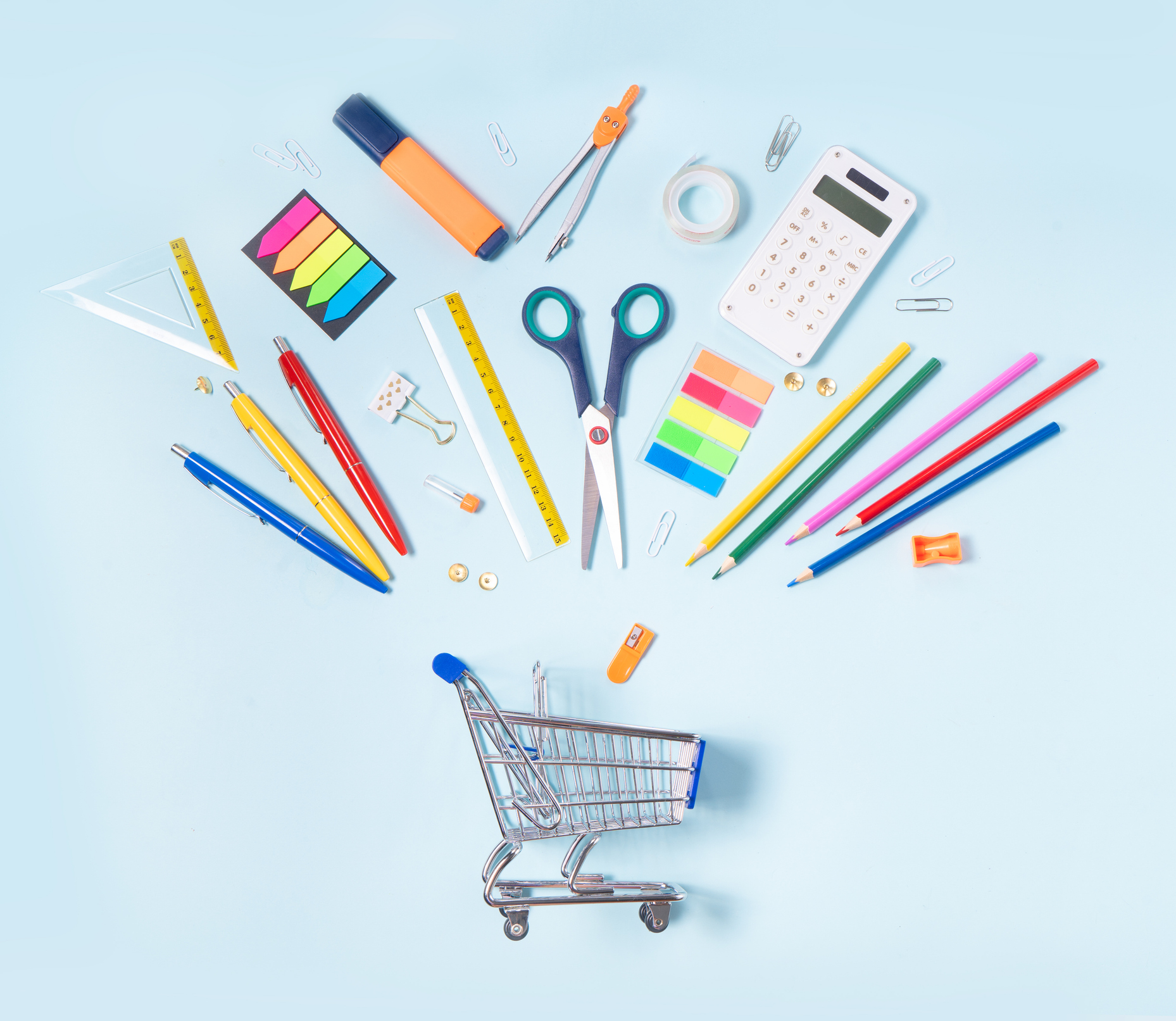
Logistical issues, including ongoing manufacturing and supply chain disruptions, may make the hottest toys and most popular gifts sell out fast or go on waiting lists. And they might not be available at all in the typical Thanksgiving-to-Christmas Day holiday shopping window this year.
“It’s a complex situation,” notes Trae Bodge, smart shopping expert at TrueTrae.com, “but essentially, the pandemic created a domino effect of delays and shortages all around the world, with bottlenecks at ports and staffing issues at factories. My sense is that we’re really going to feel it when the holiday shopping season reaches its peak. For that reason, I’m suggesting that consumers get started soon.”
Key points of entry for container ships carrying retail goods include Southern California and the Port of New York and New Jersey. The Los Angeles-Long Beach port complex, the U.S.’s biggest, was facing a backlog of dozens of cargo ships – as many as 73 one recent day – floating offshore waiting for their turn to be unloaded. It's a similar scene on the Atlantic Ocean off Long Island.
From just $107.88 $24.99 for Kiplinger Personal Finance
Become a smarter, better informed investor. Subscribe from just $107.88 $24.99, plus get up to 4 Special Issues

Sign up for Kiplinger’s Free Newsletters
Profit and prosper with the best of expert advice on investing, taxes, retirement, personal finance and more - straight to your e-mail.
Profit and prosper with the best of expert advice - straight to your e-mail.
What’s the holdup? A shortage of workers to unload the containers, along with trucks and drivers to haul them away are among the problems.
“The American consumer’s buying strength is so strong and epic that we can’t absorb all this cargo into the domestic supply chain,” Gene Seroka, executive director of the Port of Los Angeles, told KCLA-TV in Los Angeles.
And it’s costing suppliers and retailers dearly, with those costs being passed on to shoppers in terms of higher prices -- or in the case of Costco, once again putting limits on the number of certain items shoppers can buy (toilet paper, paper towels and bottled water), just like in the early days of the pandemic.
The bottleneck at ports is also forcing some retailers to dive into the shipping business. Home Depot is leasing its own cargo ship to get goods into other U.S. ports and to stores. “We have a ship that's solely going to be ours. It’s just going to go back and forth with 100% dedicated to Home Depot,” Home Depot president and COO Ted Decker told CNBC. Costco, too, has also stepped into the shipping game, chartering three container ships to make runs between Asia and ports in the U.S. and Canada.
But it’s not just the ports in the U.S,, on the receiving end of goods,the importers, that are experiencing delays. Port closures in Asia are affecting that end of the supply chain, the exporters, says Jonathan Gold. vice president for supply chain and customs policy at the National Retail Federation.
That’s creating continuing challenges as retailers work to supply enough inventory to meet demand.
“Keep in mind, brands may import parts from various manufacturers in order to build their final product and if one is delayed or backed up, it sends a wave of disruptions in production and in the supply chain,” says retail savings expert Andrea Woroch. “That’s what we are seeing here. We will also see huge delays in the shipping of large items including big screen TVs (a hot Black Friday purchase!) as well as furniture, appliances and cars.” With lower supply also comes higher prices, says Woroch, and some toy experts have estimated that toy prices will jump by 5% to 10%.
That’s why shopping earlier than usual this holiday shopping season may be the smarter play.
Woroch says that if your intended recipient is dead-set on something specific that you do not hesitate to indulge. Hot toys, including LOL Dolls, Barbie Dreamhouse, “Star Wars” toys, LEGO sets, and Nintendo Switch will sell out fast and retailers will have a hard time keeping them on the shelf. The same goes with specific apparel or shoes, including UGG boots or electronics like a tablet or e-reader.
Bodge agrees on shopping early, but not for everything.
“I would focus on items where you have no flexibility, like a specific hot toy, a particular model of a gadget, or even a pair of shoes that are trending on TikTok,” says Bodge. “You should start looking for those items ASAP and wait on more general items, like candles, throw blankets, or holiday-themed gifts, which will be available and likely on sale as we get closer to the holidays.”
Profit and prosper with the best of Kiplinger's advice on investing, taxes, retirement, personal finance and much more. Delivered daily. Enter your email in the box and click Sign Me Up.

Bob was Senior Editor at Kiplinger.com for seven years and is now a contributor to the website. He has more than 40 years of experience in online, print and visual journalism. Bob has worked as an award-winning writer and editor in the Washington, D.C., market as well as at news organizations in New York, Michigan and California. Bob joined Kiplinger in 2016, bringing a wealth of expertise covering retail, entertainment, and money-saving trends and topics. He was one of the first journalists at a daily news organization to aggressively cover retail as a specialty and has been lauded in the retail industry for his expertise. Bob has also been an adjunct and associate professor of print, online and visual journalism at Syracuse University and Ithaca College. He has a master’s degree from Syracuse University’s S.I. Newhouse School of Public Communications and a bachelor’s degree in communications and theater from Hope College.
-
 10 Cheapest Places to Live in Washington
10 Cheapest Places to Live in WashingtonProperty Tax Is Washington your go-to ski destination? These counties combine no income tax with the lowest property tax bills in the state.
-
 Healthy to 100: Secrets from Countries Where Retirees Age Best
Healthy to 100: Secrets from Countries Where Retirees Age BestLongevity is a team sport, according to author Ken Stern. Here's the secret sauce for living long, healthy lives from countries like Italy and Japan.
-
 My First $1 Million: Semiretired CPA, 68, San Francisco
My First $1 Million: Semiretired CPA, 68, San FranciscoEver wonder how someone who's made a million dollars or more did it? Kiplinger's My First $1 Million series uncovers the answers.
-
 9 Types of Insurance You Probably Don't Need
9 Types of Insurance You Probably Don't NeedFinancial Planning If you're paying for these types of insurance, you may be wasting your money. Here's what you need to know.
-
 21 Last-Minute Gifts for Grandparents Day 2025 to Give Right Now
21 Last-Minute Gifts for Grandparents Day 2025 to Give Right NowHoliday Tips Last-minute gifting is never easy. But here are some ideas to celebrate Grandparents Day.
-
 Texas Sales Tax-Free Weekend 2025
Texas Sales Tax-Free Weekend 2025Tax Holiday Here's what you needed to know about the Texas sales tax holiday.
-
 Alabama Tax-Free Weekend 2025
Alabama Tax-Free Weekend 2025Tax Holiday Here’s everything you need to know about the 2025 back-to-school Alabama sales tax holiday.
-
 Amazon Resale: Where Amazon Prime Returns Become Your Online Bargains
Amazon Resale: Where Amazon Prime Returns Become Your Online BargainsFeature Amazon Resale products may have some imperfections, but that often leads to wildly discounted prices.
-
 What Does Medicare Not Cover? Eight Things You Should Know
What Does Medicare Not Cover? Eight Things You Should KnowMedicare Part A and Part B leave gaps in your healthcare coverage. But Medicare Advantage has problems, too.
-
 15 Reasons You'll Regret an RV in Retirement
15 Reasons You'll Regret an RV in RetirementMaking Your Money Last Here's why you might regret an RV in retirement. RV-savvy retirees talk about the downsides of spending retirement in a motorhome, travel trailer, fifth wheel, or other recreational vehicle.
-
 457 Plan Contribution Limits for 2026
457 Plan Contribution Limits for 2026Retirement plans There are higher 457 plan contribution limits in 2026. That's good news for state and local government employees.
